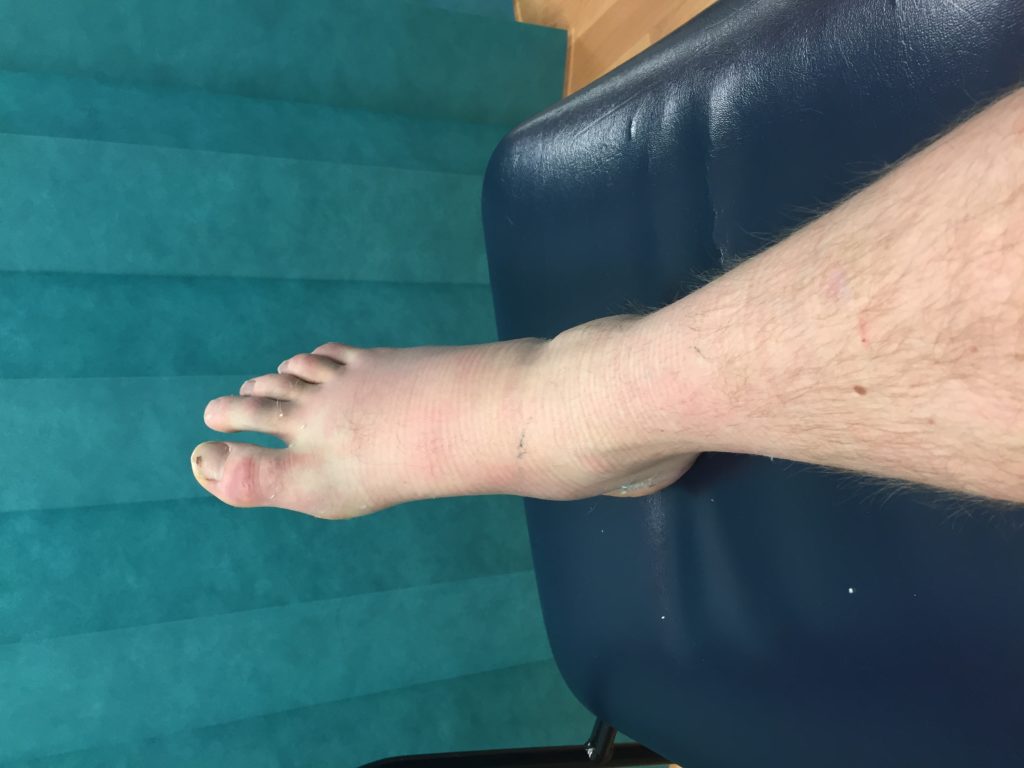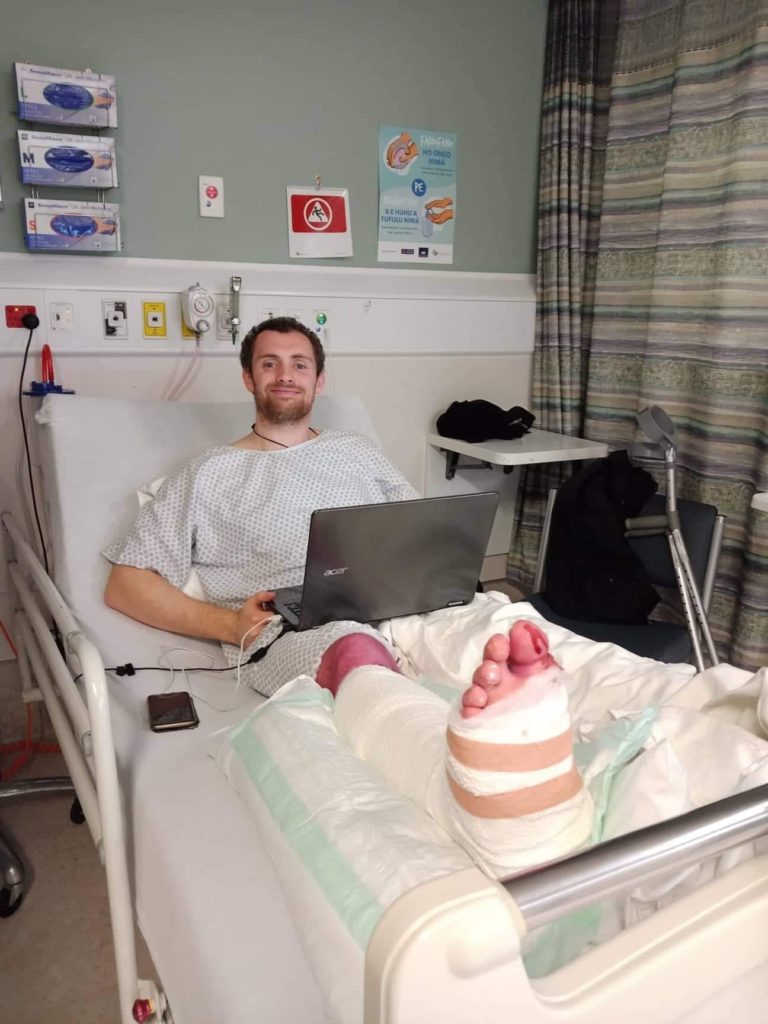Crutches… Crutches… Crutches
During my time as a sports enthusiast, I have unfortunately become well acquainted with crutches. They are essential for enabling mobility while keeping weight off injured tissue, allowing natural time to heal as well as possible without overloading it.
But at the time, they can suck.
Crutches are awkward, they make your palms sore, they fall over when you try to lean them against the bench top, they are with us for what feels like an eternity (yes six weeks can feel that long) – and it’s a shame that the safe use of crutches is often left to the user to work out themselves.
Whether young or old, the skill of using crutches efficiently can be learned using these simple concepts. But first, lets make sure they are set up properly.
Small disclaimer: As the axillary (under armpit) crutches are pretty much extinct here in New Zealand, I’ll be focusing on the elbow crutch in this post.
#1 – Setting up the crutches
Crutches must be set up for YOUR body, and typically they are set up too high. It puts unnecessary stress on your arms and shoulders, and when saddled with crutches for 6 weeks or more, this will take it’s toll on your body.
To set up the crutches, stand up straight with your arms relaxed by your sides. If your balance is not good, then do this close to a bench top so you can support yourself, or get a friend to help. Allow your arms to hang so there is a subtle but comfortable bend at the elbows. The handle of the crutch should be set to your palms at this height. Set the forearm cusps to wrap around the upper third of the forearm (closer to the elbow), NEVER above the elbow.
As a quick check, stand in front of a mirror with your crutches. Gently apply force downwards into the handles to take your weight – maintaining that slight bend at the elbows. If you feel/see your shoulders visibly rise, then it is likely the crutches are too high. If you need to lean forwards to apply the pressure through the crutches, then it is likely the crutches are too low.
#2 – Walking for your injury
The pattern of walking could depend a number of factors including type of injury, stage of injury and/or medical teams advice. I will split these into non-weight bearing, partial weight bearing and near-full weight bearing (NFWB).
Non-weight bearing (NWB):
This is usually in the early stage of recovery, following some surgeries or if you have been put into a non-weight bearing cast.
This is the hardest stage of using crutches both physically and mentally. Every effort to stand up, get out of bed, go to the toilet will test you. Factor in the pain you’re likely experiencing and some days might not feel worth it.
But,
There is a reason for this, and it is to give your body the best chance it has at healing. So turn those mini-challenges into mini-victories! Apply the following patterns to make things as easy as possible.
The concept is simple. And its based on simple geometry.
You are going to use a triangle as your guide. The two crutches in tandem will make up two points, and your good (uninjured) leg will be the third.
Place the two crutches one regular step ahead of yourself, and step through one step ahead of the crutches with the other foot, and repeat. Take your time, be methodical initially until it becomes natural
Easy – but be wary.
It’s possible to get caught out by putting the crutches too far ahead of yourself. This will mean that rather than stepping through with your good foot, you end up swinging your body through. Although quicker, more momentum simply increases the chance of you or the crutches slipping, or having to hop to regain control. Be smart and stay safe.
Partial weight bearing (PWB):
Perhaps the injury is on the low end of the severity spectrum, or you’ve gone an extended period of NWB and the doctor/physio/specialist has given you the green light to start loading gradually.
Awesome job! Celebrate this mini-victory!
The pattern here doesn’t change. Put your crutches out first as before, next step with your injured foot to the middle of the crutches and “weight-bear” within pain-free limits, step through with your good foot and repeat.
Near full weight bearing (NFWB):
You are nearly there! Graduation and the point of throwing those blasted crutches out the door is almost upon you. Once again, well done on getting this far!
The likely change here is that you will be wanting to only use one crutch. As easy as that sounds, it is super common for people to make this harder than it needs to be.
Make sure the crutch is on the OPPOSITE side to your injured leg. This is crucial. Having it the same side will cause a walking pattern similar to a pirate with a wooden peg leg. It results in overuse of the upper body on that side an “hitching” of the hip on the affected side. It also abolishes the triangle rule that has served you so well to this point. Why change something that isn’t broken?
Instead have the crutch on the opposite side to promote even weight distribution and a far more regular walking pattern. The crutch and the affected leg come forwards at the same time, followed by a step through with the good foot. If you don’t believe me, try both ways! One will feel far more comfortable than the other
#3 – Conquering steps
Steps and stairs are another challenge for someone fresh to using crutches. It can be scary, and fear of falling can be debilitating enough to keep people at home or even worse confined to the ground floor of their homes.
Steps are managed by remembering this: GAS goes UP, and SAG comes down.
G.A.S means Good, Affected and Sticks, and applies to scaling UP stairs.
- First, place your GOOD leg up one step,
- Next, bring your AFFECTED (injured) leg up to the same step,
- Last, bring your STICKS (crutches) to the same step as well, and repeat.
S.A.G is the opposite, for when going DOWN stairs.
- First, place your STICKS on the step below,
- Next, bring your AFFECTED leg to the same step below,
- Last, bring your GOOD leg to the same step below, and repeat.
It’s now up to you to put this into practice!
If you’ve made it this far, thank you for reading my blog. All the information covered is intended to help you through your injury, as it has helped me through mine.
If you did find this helpful, don’t hesitate to mention it to a friend who might benefit from it as well.
Take care out there, and lets continue to rehab and train together!
Teej



